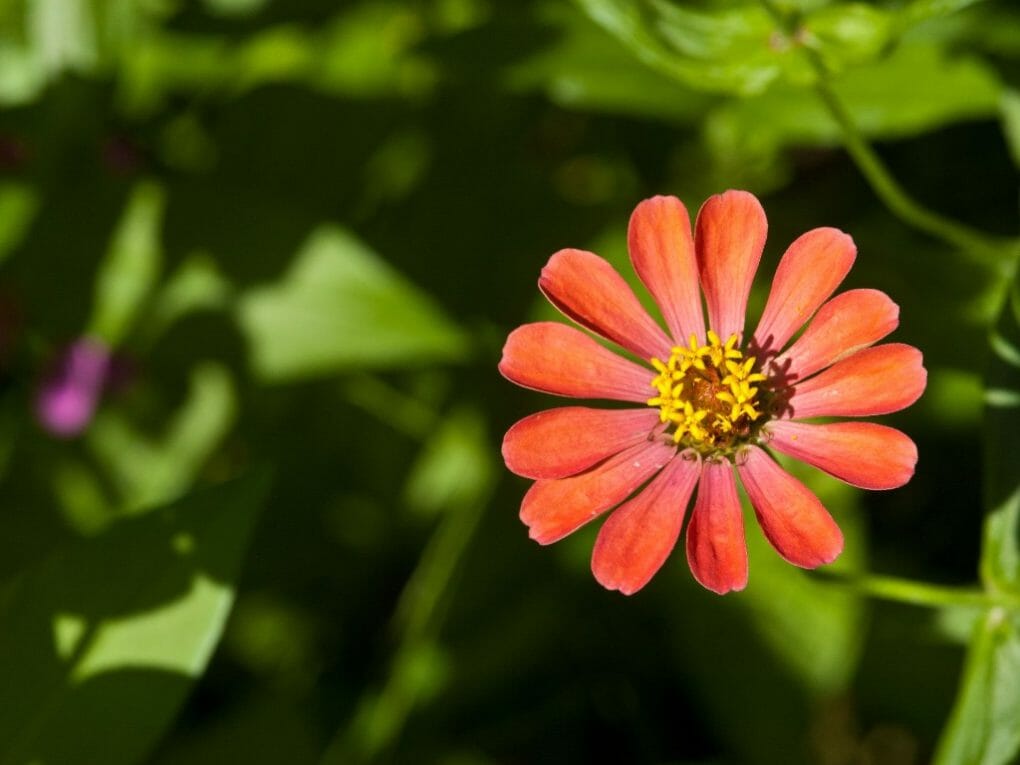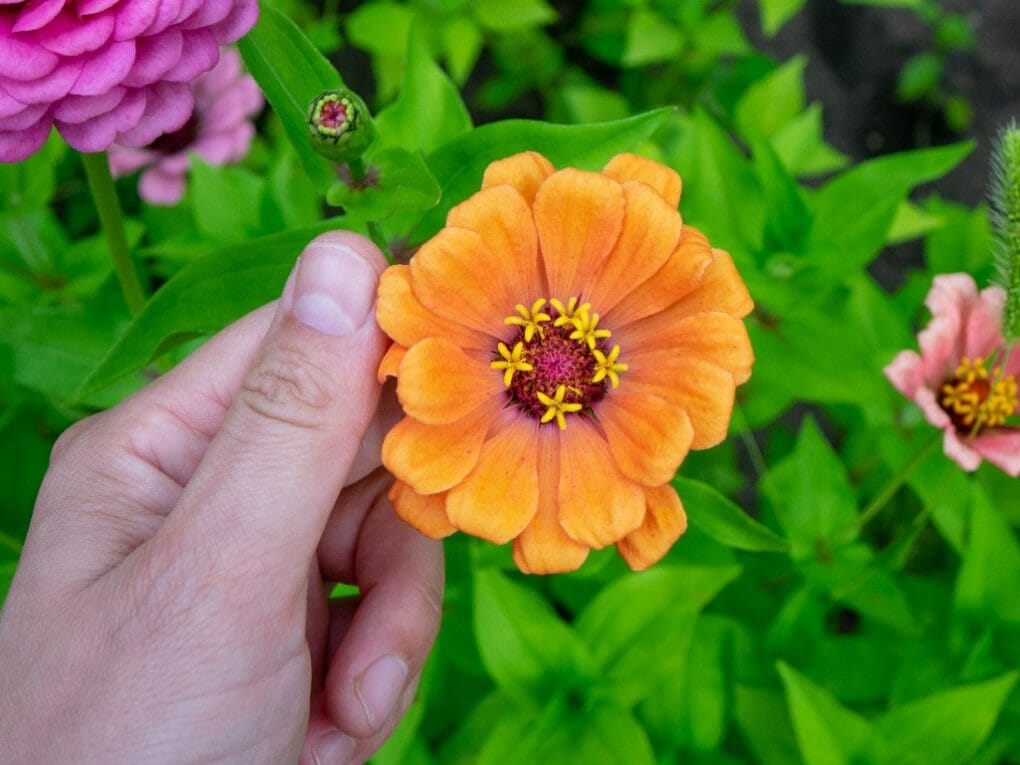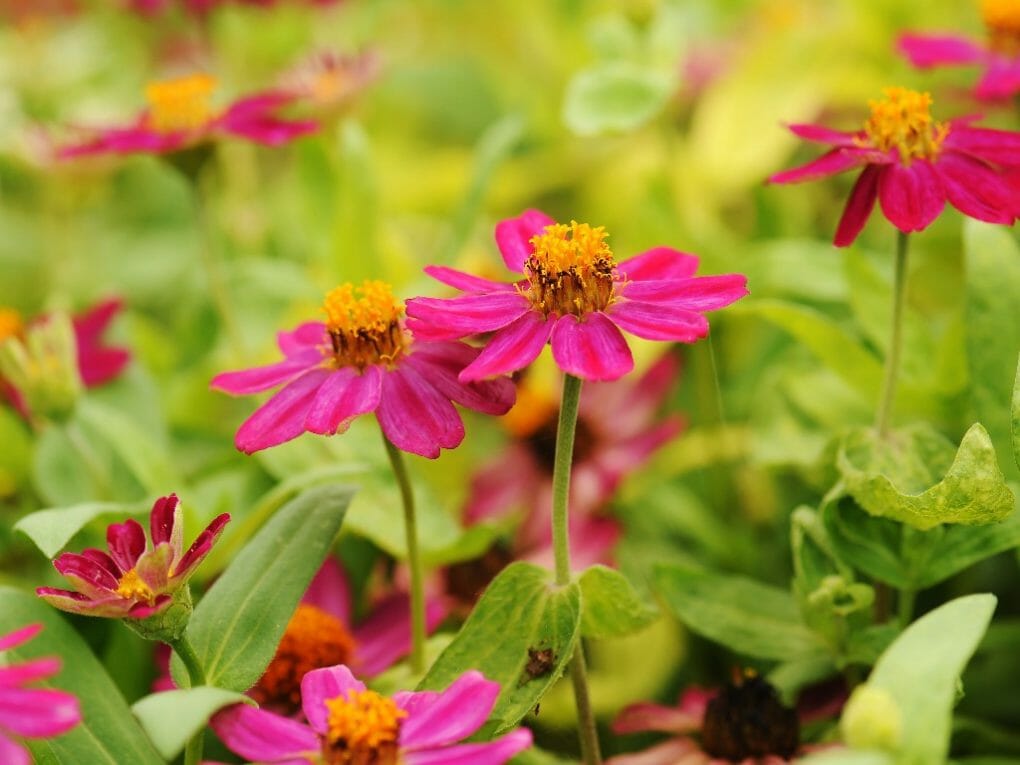How Deep Are Zinnias Roots? 4 Environmental Factors that Affect Zinnia Root Growth

Zinnia roots grow in the top 12 to 24 inches of soil, where they can easily reach rich nutrients and water. The deeper a plant’s root system goes, the more water and nutrients it can get. Zinnias are grown in soil that drains well and tends to be bigger and brighter than those grown in soil that doesn’t drain well. Zinnias also do better when they are split every few years. This helps to extend their flowering time and makes for a fuller bush by spreading the plant’s resources evenly throughout its body. The depth of a zinnia’s roots also depends on several environmental factors. Read more!
Table of Contents
Environmental Factors that Affect Zinnia Root Growth
Nature Short Lifespan
They only live for one year, so their roots aren’t as deep as those of perennials. They don’t have enough time to grow big root systems like perennials. But root system size varies among zinnia varieties. For example, small zinnia cultivars that do well in window boxes have shallower roots than 3-foot-tall cultivars that need deeper roots for proper anchorage. All zinnias need temperatures above 50°F to grow well before late fall and winter frosts kill them.
Soil Environment
Zinnias have soft, mature roots, so they need good soil to grow beautiful flowers and strong roots. They like a pH between 5.5 and 7.5, which is slightly acidic to neutral, and organic matter that gives them both large and small amounts of nutrients. If you keep your soil loose and well-drained, zinnia seeds that have just sprouted will easily spread their roots into the topsoil as long as they get enough sun. If the zinnias are in the shade, their roots won’t spread and may stop growing.
Soil Structure and Water
The depth of zinnia roots is directly affected by the texture of the soil and how often you water it. For instance, loose soil lets water flow into it, so the roots dig deeper and wider to find more water and food. Zinnias need about an inch of water spread each week evenly to make their beautiful flowers. Evenly moist soil that is neither too wet nor too dry and has a loose texture help roots go deep.
Spacing

How far apart you plant your zinnias also affects how deep their roots grow. Most zinnias should be planted between 4 and 24 inches apart. If they are too close, the roots won’t spread out as they should. If you plant them closer than 4 inches apart, their roots can’t grow the right way because they start to grow into each other and fight for resources. Follow the instructions on the plant label or seed packet for how far apart to plant zinnias so that all plants grow big, beautiful flowers and strong root systems to support the garden.
Zinnia Germination
Seeds need moisture and warmth to germinate, so you should sow zinnias indoors 6-8 weeks before the last frost date. You can also plant zinnia seeds directly in the soil if your soil is warm and moist enough. Make sure to water them well until they germinate, which may take 2-4 weeks. Once they germinate, give them plenty of sun and water regularly. In 5 to 10 days, roots should start to show.
Zinnia Growing Tips
Grow in Full Sun
Zinnia plants, like the full sun, should be planted in the garden where they will get as much sunlight as possible. They do well if left outdoors in the summer but may not flower well because of the heat.
Water Regularly
Zinnias need consistent water to grow and bloom, especially when planting them in soil that is loose or heavy clay. Water them deeply enough to spread their roots and access moisture throughout the root system rather than just at the surface. Mulch around zinnia plants every 3 to 6 months during the moist season to help keep moisture levels high around their roots and discourage weeds.
Allow Air Circulation Around Zinnia Plants
Ensure adequate air circulation is around the zinnia plants so they can respire easily and avoid becoming sun-scorched or suffocated by their foliage. Zinnias like open soil, so if you plant them in a pot or garden bed with dense plants, allow some gaps for the air to circulate.
Plant Seeds Outside
Rather than planting zinnia seeds indoors in the germination pod, sow them outside in the open soil. Doing this will help increase their chance of germinating quickly and growing robust plants. The soil’s temperature range of 80–85°F (27–29°C) is ideal for germination, but this only applies to rapid sprouting. Temperatures in the soil between 70-75°F (21-24°C) are optimal for germination and growth. The timing doesn’t work out for those of us who have shorter growing seasons, but if possible, sow your zinnia seeds directly outside after the danger of frost has passed. Zinnias prefer full sun. This can occur if the number of days required for your zinnia to complete its life cycle (days to maturity) is less than the number of frost-free days in your growing season.
Apply Supports
Some zinnias develop tall, top-heavy structures that can be blown over by the wind. Numerous gardeners support their plants with stakes and cover the entire bed with horticultural flower netting to protect them if they are cultivating a large number of flowers, . Even though the netting is not invisible, it does an excellent job of holding all of these large flowerheads.
Install any supports or trellises while the plants are young so they can grow into them. Waiting puts the plants at risk as you attempt to relocate them. Benary’s Giant Series zinnias, which can reach heights of 4 to 5 feet, are among the most popular tall, showy varieties.
Pinch Your Zinnia
Pinching zinnia flowers will cause them to produce more flowers. This is not the same as cutting the flower head off at the stem, which can damage or kill the zinnia. Pinching just separates the petals so they may bloom again next year.
Deadhead Often
Zinnias bloom for about three weeks, after which the petals fall off, and the flower becomes a tall stalk of flowers. To prolong the life of your zinnia plants and encourage more blooms, deadhead or cut away any spent flowers as they appear.
Root Your Cuttings
Cuttings taken from mature plants will root more slowly and may not establish well in the garden. To improve the chances of success, cuttings taken 2 to 3 months after flowering will usually root best. Make a slant cut about 1 inch below a leaf tip on the stem where new growth is seen. Use fresh cutting water and insert the cutting into moist soil, planting it at least two inches deep if possible.
Save the Best Seeds

To produce the best seedlings, sow zinnia seeds as close to the planting site as possible. When gardeners transplant seedlings away from their original location, they often save the best plants for future sowing.
